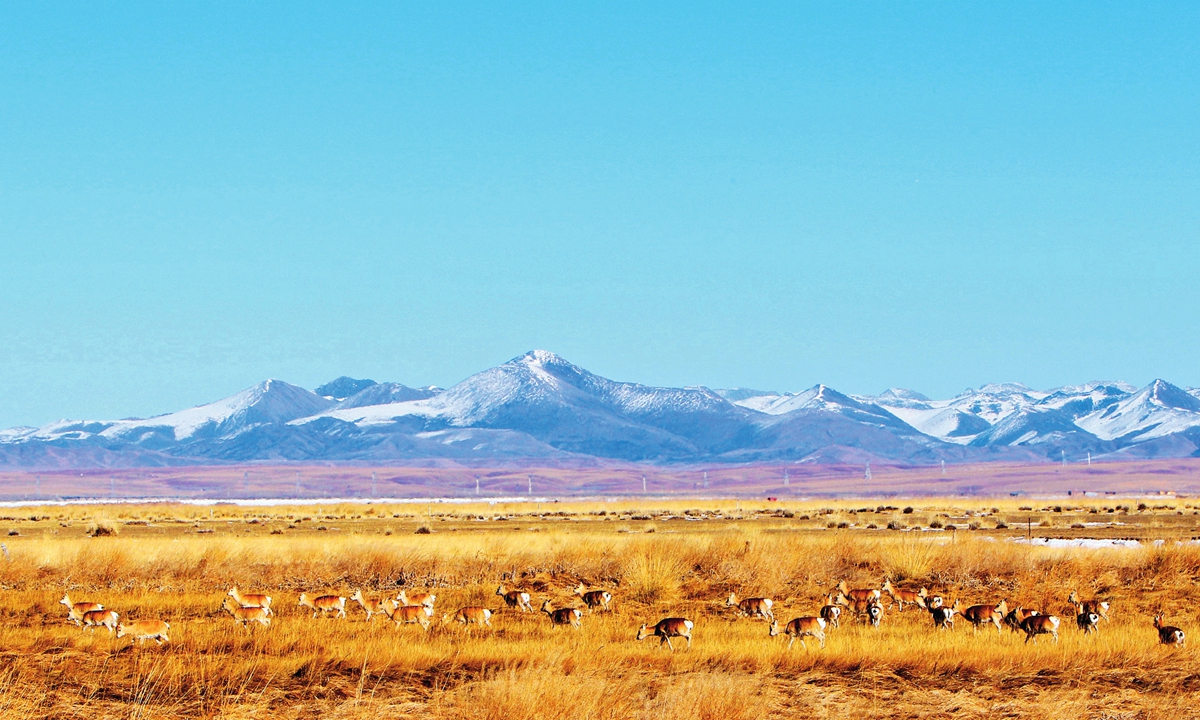
Chinese diagonal gazelles living in Northwest China's Qinghai Province Photo: Courtesy of Ge Yuxiu
Editor's Note:China has made great strides in protecting the environment and maintaining biodiversity in the past decades. Cases of population restoration of species such as giant pandas, Asian elephants, and snow leopards are familiar to people around the world. However, there are still many stories of rare wildlife species that are yet to be shared.
The first phase of the 15th meeting of the Conference of the Parties to the Convention on Biological Diversity (COP15), has come to a successful conclusion in Kunming, Yunnan Province in Southwest China. The Global Times has collected five untold stories of some previously endangered animals and plants, which will illustrate China's efforts in maintaining biodiversity in a broader sense.
Chinese white dolphins: a wise solutionChina's wisdom in minimizing environmental harm when building the world's longest sea crossing bridge - Hong Kong-Zhuhai-Macao Bridge (HZMB) - which runs across the water that is the primary habitat for Chinese white dolphins, has served as a science-oriented inspiration for averting risks to marine life.
There have been many efforts by the design team to control the ecological impact of the bridge, under the guidance of national-level biodiversity programs.
To meet the Chinese government's priority to preserve the natural habitat for white dolphins, the construction of the HZMB that started in 2009 devoted funds of 340 million yuan ($52.76m) for the protection efforts.
The rare Chinese white dolphin is under first class state protection, and primarily lives in the Pearl River Estuary in southeastern China.

A Chinese white dolphin Photo: IC
Meng Fanchao, chief designer of the bridge, said in a recent exclusive interview with the Global Times that the team constantly revised design schemes to minimize disturbance to the dolphins, such as shortening the construction period and cutting the number of piers that dolphins could collide with.
The construction team was not allowed to conduct large-scale excavation work that could cause floating rubbish during the peak breeding season for white dolphins from April to August.
The number of piers was strictly curtailed from an initial 318 to 224, Meng also noted.
Workers' vigilance was important during the construction, and was helped by training and education.
Monitoring and surveys of the dolphins in Lingding Bay and in their other habitats are still going on, Meng said. "We are now confident to say that the HZMB Bridge takes the lead in environmental protection among world-class super-large bridges."
Przewalski's horse: a good problemWith an evolutionary history of more than 60 million years, Przewalski's horse is believed to be the only truly wild horse species in existence today.
Once extinct in China due to excessive poaching and environmental degradation, China started reintroducing Przewalski's horses from the UK, the US and Germany in 1985, mainly raising the precious creatures in Northwest China's Xinjiang Uygur Autonomous Region.
On August 28, 2001, China successfully returned the first group of Przewalski's horses to the Kalamaili Ungulate Nature Reserve in Xinjiang.
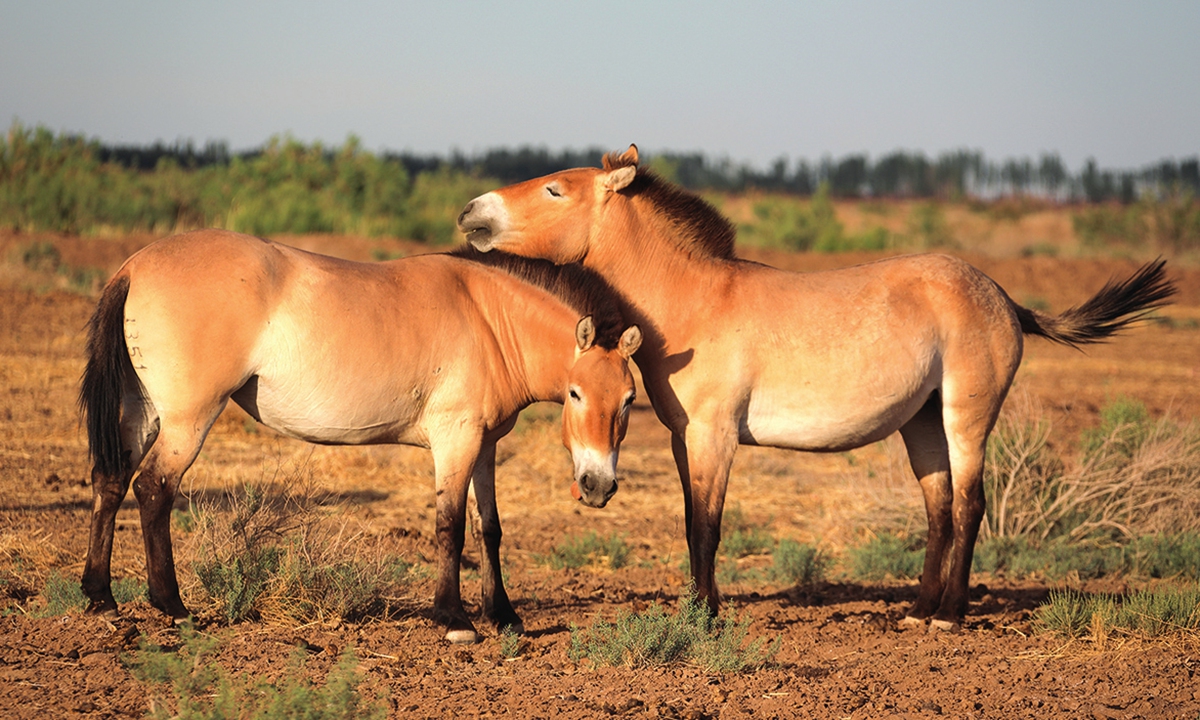
Przewalski's horses Photo: VCG
Yang Jianming, director of the Xinjiang Wild Horse Breeding and Research Center, told the Global Times that after more than 30 years of hard work, the Xinjiang Wild Horse Breeding and Research Center has successfully bred over 800 wild horses across six generations, making it the largest breeding base for Przewalski's horses in the world.
By 2020, the number of Przewalski's horses in Xinjiang had grown to 484, including 274 horses in the wild, 113 horses in semi-captivity and 97 horses in captivity, according to the Xinjiang Wild Horse Breeding and Research Center. The Kalamaili reserve had 274, 10 times the number in 2001.
According to Yang, the number of Przewalski's horses needs to reach about 2,500 to form a stable population in the wild. Through more than 30 years of development, the "Wild Horse Returning Home" Project has accumulated a lot of experience when it comes to releasing the animals and has provided a good reference and model for the reintroduction of other species in China.
Chinese diagonal gazelle: a guaranteed futureAt their darkest days, the population of Chinese diagonal gazelle was less than 300, no more than giant pandas.
The species, also known as Przewalski's gazelle, is a unique species of China. It is currently only present in a small area around Qinghai Lake in Northwest China's Qinghai Province. It is one of the most engendered gazelles in the world.
Due to human activities such as hunting and setting fences, together with other challenges of parasites, wolves, winter drought and isolated population, the species almost died out in 1990s.
In November 1997, on the way to shoot some pictures of wild swans, photographer Ge Yuxiu met Chinese diagonal gazelle for the first time. "There were seven of them, jumping and running in a line. Their white tails were like lotus on the grassland," Ge said.
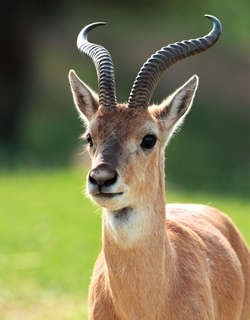
A Chinese diagonal gazelle Photo: Courtesy of Ge Yuxiu
It happened too fast and Ge was unable to snap a perfect picture. However, the unclear photo turned out to be the first time the mysterious and rare animals had been captured in camera.
He then made up his mind to call on more people to join the team to protect these fragile and adorable animals.
In recent years, volunteers and governments have been working together to protect the Przewalski's gazelle by building drinking ponds, reserving migration channels, removing net fences and barbed wire, and feeding overwintering forages.
After two decades of natural conservation with the efforts from different parties, the population of the precious species has increased around 10 times, making it an outstanding example of China's achievements in conserving ecosystems and the environment in the Qinghai-Xizang Plateau.
The Sanjiangyuan National Park, where three major rivers originate and home to the Przewalski's gazelle, was announced to be among the first batch of national parks in China. The future of wildlife species in the Qinghai-Xizang Plateau, including the Przewalski's gazelle, will be guaranteed.
Paphiopedilum, 'pandas of the plant world' savedAlthough there are at least 25,000 species of orchids on Earth and eight percent of all flowering plants are orchids, some of them are threatened with extinction and have been dubbed the "pandas of the plant world."
Zhang Shibao, a researcher from Kunming Institute of Botany under the Chinese Academy of Sciences, has paid special attention to the endangered strain, called paphiopedilum, after spending over two decades on the whole orchid family.
When the rare wild paphiopedilum was discovered in the 1970s, it caused a sensation in the international horticultural community and demand was strong in the international market due to its ornamental and cultural value.
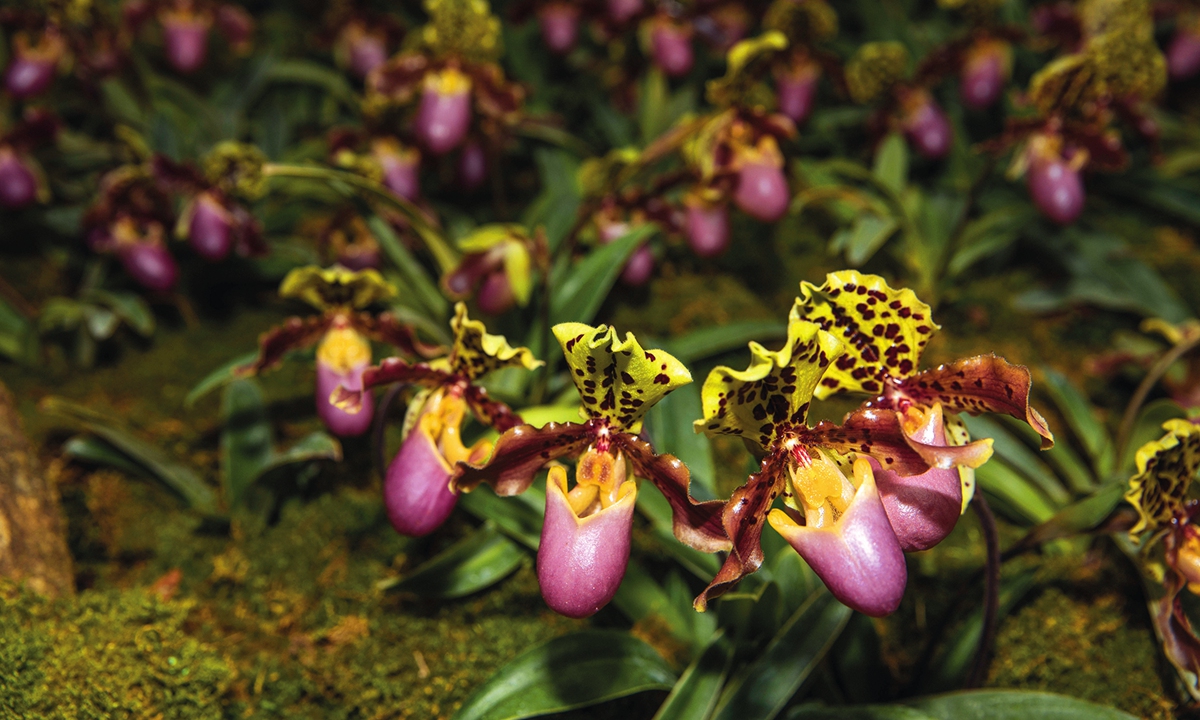
Paphiopedilum Photo: Li Hao/GT
"People went crazy for its color, flower shape and fragrance, not just in China, but also in Europe," he recalled. "These collectors came to China and Southeast Asia for them, as they also had a long tradition of cultivating orchids. At the peak time in the 1980s, a paphiopedilum plant could sell for $8,000."
Zhang's team are working on artificial propagation and cultivation methods that can effectively protect wild orchids. The number of paphiopedilum malipoense has increased from just a dozen in the wild into 10,000 thanks to the careful conservation efforts of the research team.
These propagated plants will be moved back to the place of origin, where they can take part in their original ecosystem made up of certain fungi and pollinators to help the recovery of the wild population.
Acer yangbiense: innovation wins
The concept of Plant Species with an Extremely Small Populations (PSESP) was raised by Chinese scientist Sun Weibang from the Kunming Institute of Botany under the Chinese Academy of Science in 2013.
PSESP are characterized by small remaining populations (far lower than the Minimum Viable Population MVP), restricted habitat, extremely high risk of extinction, and exposure to serious human disturbance.
Sun and his team's work brought back acer yangbiense from the brink of extinction, as only five of which were found in the wild as a new species back to 2001.
It is a species of maple with a very restricted distribution in Yangbi county, Southwest China's Yunnan Province. The tree can grow up to 20 meters in height with noticeably new pubescent branchlets. The leaves are five-lobed and large with clear pubescence on the veins on the underside of the leaves.
Pollination and seed germination were two key problems that scientists had to solve in terms of artificial propagation. Due to the long distance among each plant, the progress of pollination was extremely difficult in the wild. A local villager found a way: During the flowering season, branches of one tree were cut down and tied to another tree, with surprising degrees of success. The scientists harvested a batch of seeds in 2008.
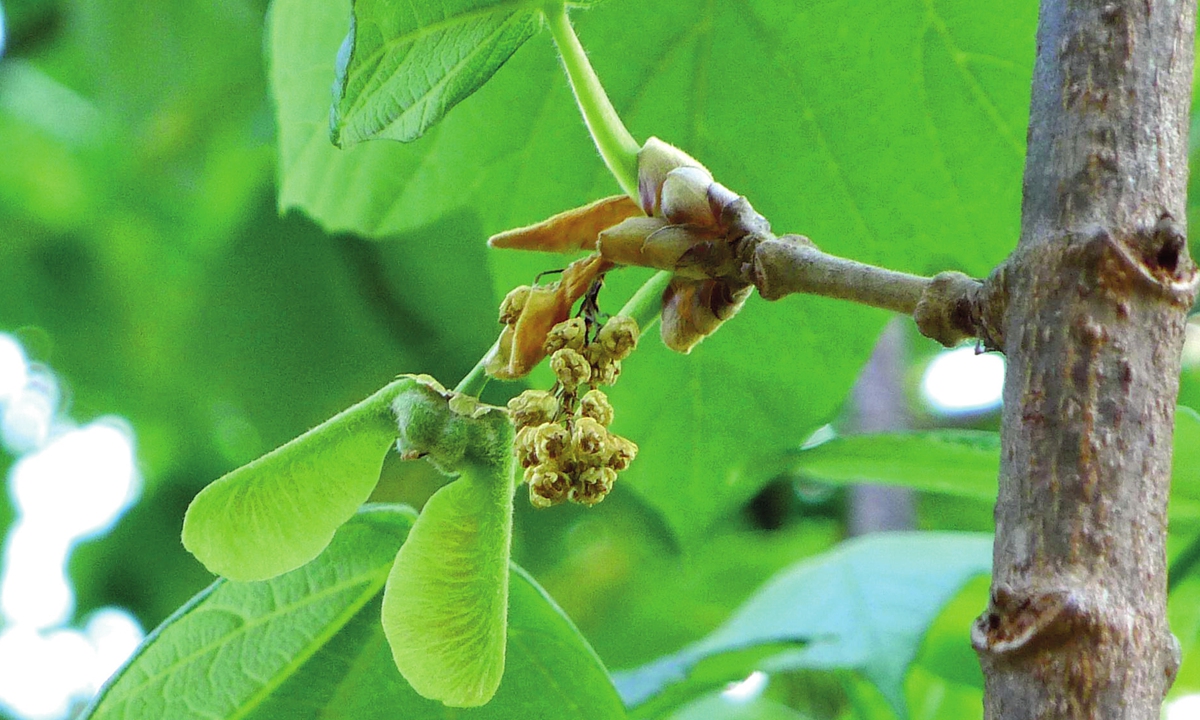
Acer yangbiense Photo: CASS
In its natural habitat, the seed germination rate of acer yangbiense is exceedingly low. The local forestry department would routinely plant more than 50,000 seeds, but only 5 seedlings were obtained. After research, Sun and the team mastered the key technology of "awakening" seeds, and successfully cultivated more than 1,600 acer yangbiense seedlings.
More than 50 acer yangbiense seedlings cultivated by Sun Weibang's team have been planted in the Kunming Botanical Garden, and more than 4,600 have been transplanted to their place of origin. Additionally, 4,000 trees have been planted in nearby farms for near-site conservation. Another of 38,000 plants are awaiting to be returned to nature from the nursery. He said that after years of work, we can say that acer yangbiense is now out of danger.
The case of acer yangbiense has formed a systematic mechanism for the world's PSESP conservation including steps like resource investigation, scientific research, in-site conservation, near-site conservation, ex-site conservation, return to the wild, and conservation of germplasm resources.









